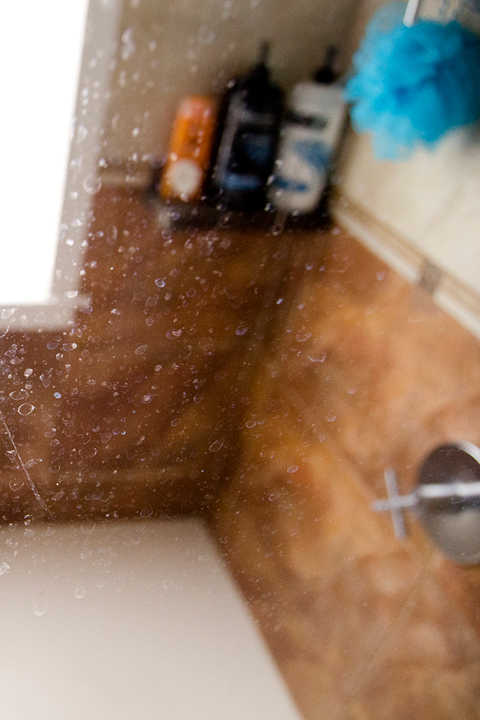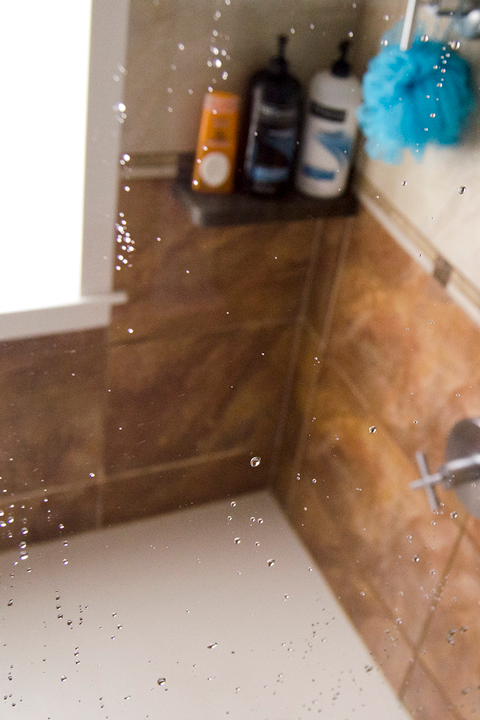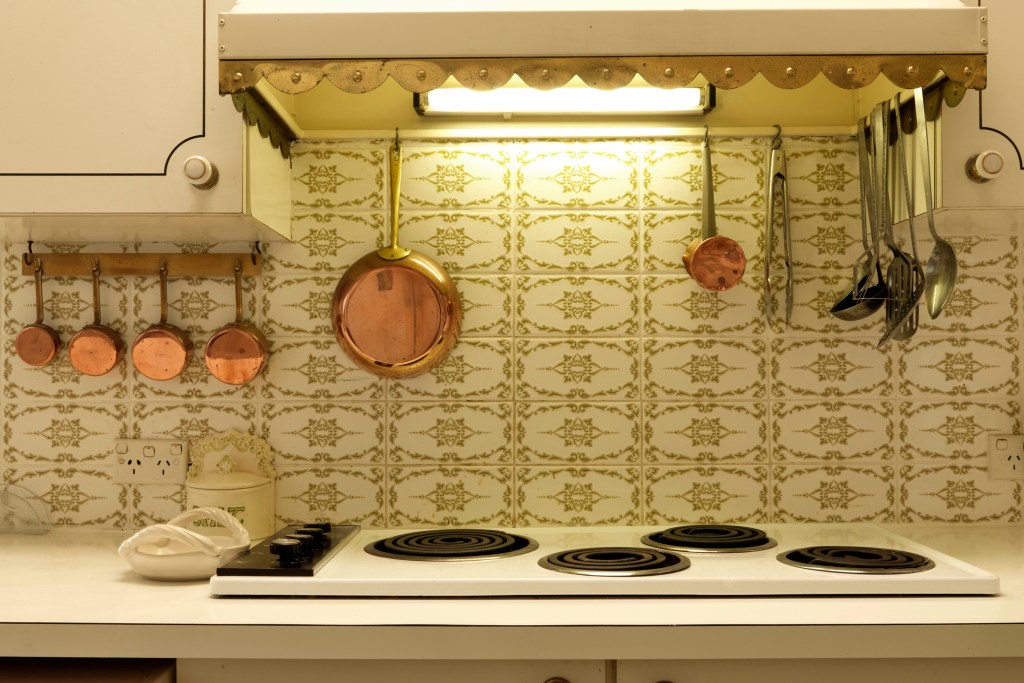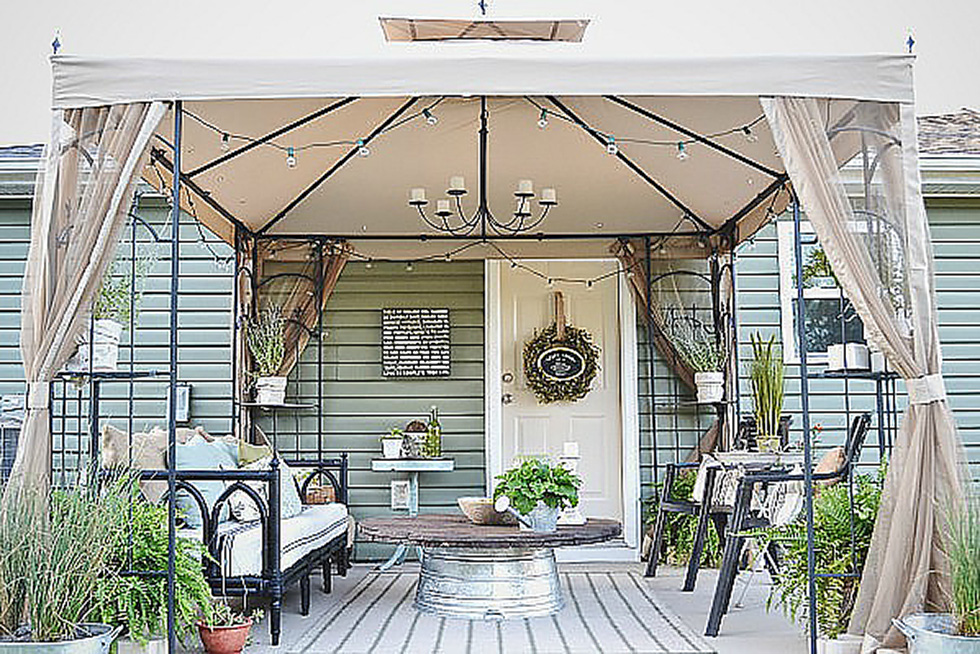Easy-to-afford solutions for your tools, sporting and seasonal gear (so you’ll have room for your car, too).

If you’ve got a garage, most likely you’ve got waaayyyy more than cars in there. It’s the catch-all place to keep stuff (mostly) out of sight and out of mind.
Put order to the chaos and protect your car’s paint job with simple storage systems and organizing hacks for everything from sports equipment to tools.
Bikes, Skates, and Other Wheels
#1 Hoist bicycles to the rafters with a rope-and-pulley system (about $42) that makes it easy to raise the bike and lock it safely in place. When you’re ready to ride, release the lock and lower your bike to the garage floor. You’ll need an hour or two and basic tools to secure the pair of pulleys to ceiling joists and thread the ropes. (Similar hoists are available for kayaks or small boats; starting around $25.)
#2 Use a specially designed wall rack to hang helmets and skateboards together; starting around $20. Secure this one to wall joists in less than an hour.
#3 Keep scooters and bikes out of the way with tool hooks installed on a length of 1-inch-by-6-inch lumber. You’ll pay $3 for each pair of vinyl-coated screw-in tool hooks and $1 per foot for lumber. You’ll need only an hour or two to secure the lumber to wall joists and screw the hooks into place along the board.
Sporting Goods
#4 Bring together balls and bats on a convenient wire rack equipped with hangers that hold gloves too; starting around $31.
#5 Stash two pairs of snow skis, poles, and boots in one handy steel ski rack; $25. Securing this rack to wall studs helps it hold the weight of the equipment. If you can’t position it on studs, use wall anchors for a secure installation. You can do the task with or without anchors in an hour or two.
#6 Stow your fishing rods by suspending two wire shelves from your garage ceiling about 5 feet apart, then threading the rods through the openings. Use shelves left over from a project or purchase a 4-foot-by-16-inch vinyl-coated wire shelf for $25, and saw it in half crosswise (or clip with bolt cutters) to make two 2-foot shelves. Snip additional wires where you need wider slots to accept pole handles or reels.
Tools
#7 Hang wrenches and bungee cords using an ordinary vinyl-coated wire tie-and-belt rack, available at big box stores, starting at $10.
#8 Hang metal tools on a magnetized rail, keeping items in view and easy to retrieve; starting around $15. Simply screw the rail to wall studs to safely hold the weight of the tools (it’s an idea you may be drawn to.)
#9 Cushion and protect tools by padding your toolbox drawers with a soft, nonslip liner. The open-weave design keeps moisture away and prevents tools from rolling around. Enough material to line eight average-size drawers is $9. Just cut the liner to length to fit and slip it into the drawer.
#10 Organize small items — such as pencils, box cutters, and tape measures — by stashing them in electrical junction boxes; about $0.53 each (free if you have spares). Purchase a variety of sizes and shapes and secure them to studs or pegboard.
Yard and Garden Gear
#11 Transform an old filing cabinet into storage bins for various yard tools. Remove the drawers, turn it on its backside, and use a couple afternoons to apply paint and pegboard sides. Less than $25.
#12 Mount heavy tools, long-handled implements, and ladders on long steel rails with extruded holes high on the garage wall and secured to studs. Add hooks and pegs on the rail to hang big tools. Two 48-inch rails sell for $26 to $30.
#13 Secure a wooden pallet to wall studs to create a pocket for holding long-handled garden tools. To find free wooden pallets, check with local businesses as well as online classifieds, such as Craigslist. Cost: free.
#14 Use a can rack to keep bottles of fertilizers, repellents, and lubricants upright and easy to retrieve. Rack ($14) prevents cans and bottles from tumbling off shelves.
“Visit HouseLogic.com for more articles like this. Reprinted from HouseLogic.com with permission of the NATIONAL ASSOCIATION OF REALTORS®.”






























